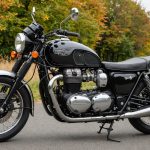The Suzuki GSX-R1000, a prized possession of any motorcycle enthusiast, is often applauded for its power, performance, and sheer exhilaration that it brings to every rider. At the heart of this motorcycle is the engine, a masterpiece of Suzuki that sings at high rpm, delivering a thrilling speed that sends adrenaline rushing through the veins.
However, with great power comes great responsibility. Therefore, mastering the control systems of this beast is as important as enjoying the ride. One crucial part of this control system is the Anti-lock Braking System (ABS). It is a safety critical system that prevents the wheels from locking up (or skidding) while braking, thereby maintaining tractive contact with the road surface.
Also to read : How can I ensure the correct installation of aftermarket fog lights on a Yamaha Tracer 900?
This article will delve into the intricacies of adjusting the ABS on a Suzuki GSX-R1000. Our aim is to provide you with comprehensive guidance on how to tweak the settings correctly to ensure optimum braking performance.
Understanding the ABS System on a Suzuki GSX-R1000
The Suzuki GSX-R1000 is equipped with an advanced ABS system that adds an extra layer of safety to your ride. This system is designed to assist you, the rider, in maintaining full control of the motorcycle during hard braking situations, particularly on low-friction surfaces.
Topic to read : How can I improve fuel efficiency on my Triumph Bonneville T120 during long-distance tours?
The ABS on a Suzuki GSX-R1000 is not a standalone system but is integrated into the motorcycle’s overall electronics package, which includes throttle control, power modes, traction control, and a quickshifter.
This system relies on speed sensors at the front and rear wheels, which send vital data to the ABS control unit. The control unit continuously monitors the rotational speed of both tires and triggers the ABS mechanism if it detects a potential wheel lock scenario.
Mastering the Control Panel
The control panel of GSX-R1000, located on the handlebars, provides easy accessibility to different settings. One of these settings includes the ABS mode selection, which can be altered according to your riding preferences and conditions.
You can switch between different modes using the ‘Select’ button, located on the left handlebar. The ‘Up’ and ‘Down’ arrows allow you to navigate through the available modes. The ABS mode can be viewed on the motorcycle’s LCD panel, prominently displayed among other key metrics like rpm, speed, fuel level, and odometer.
Adjusting the ABS Settings
Adjusting the ABS settings on your Suzuki GSX-R1000 involves a careful understanding of the different modes available and the riding conditions. The ABS system on GSX-R1000 offers two main modes – Mode 1 and Mode 2.
Mode 1 is designed for straight-line situations. In this mode, the ABS works on both the front and rear brake. It is ideal for situations where maximum braking performance is required, such as track day riding or high-speed highway cruising.
Mode 2, on the other hand, offers a slightly different level of intervention. In this mode, the ABS provides minimal intervention on the rear brake. It is suitable for situations where you need full control over the rear wheel, such as during cornering or off-road riding.
Balancing Front and Rear Braking
A good knowledge of front and rear braking is essential for safe and controlled riding. In general, the front brake on a motorcycle provides the most stopping power. However, relying solely on it can lead to instability, especially at high speed.
The rear brake plays a vital role in stabilizing the motorcycle, especially during cornering and low-speed maneuvers. Therefore, it’s important to use both brakes in a balanced and coordinated manner.
The ABS system on your Suzuki GSX-R1000 is designed to manage this balance effectively. However, you can adjust the ABS settings to adapt to different riding styles and scenarios. For example, if you are an aggressive rider who relies heavily on the front brake, you might want to opt for Mode 1. If you are a more relaxed rider who favors rear brake usage, Mode 2 might be a better option.
Remember, adjusting the ABS on your Suzuki GSX-R1000 is not about defeating the system, but rather about enhancing it to suit your riding style. So, go ahead and fine-tune those settings, and make the most out of your riding experience.
TFT LCD Instrument Panel and ABS System Monitoring
The Suzuki GSX-R1000 motorcycle comes equipped with a high-resolution TFT LCD instrument panel. This panel displays vital riding information, including speed, rpm, fuel level, odometer, and most importantly, the status of your ABS settings.
The LCD panel displays the current ABS mode, allowing riders to monitor and adjust it as needed. The ABS-equipped Suzuki GSX-R1000 provides an easily accessible and intuitive way to manage the ABS settings. This is especially useful when changing riding conditions demand different ABS adjustments.
In addition, the LCD panel offers other useful features such as a quick shift system indicator, power delivery data, and traction control settings. This instrument panel is an upgrade from the prior generation GSX models and provides a user-friendly interface for riders to manage their motorcycle’s performance and safety features.
The panel also provides indicators for the electronic throttle bodies and cruise control. These features are part of the motorcycle’s comprehensive electronics package, working in harmony with the ABS system to deliver a safe and enjoyable ride.
Remember, the TFT LCD instrument panel is your window into the performance and safety features of your Suzuki GSX-R1000. Utilize it to monitor and adjust the ABS settings, ensuring the optimum balance between power delivery and safety for your riding style.
Conclusion
In conclusion, mastering the ABS settings on your Suzuki GSX-R1000 is all about understanding the power and functionality of this remarkable motorcycle. The ABS system, working in concert with other control systems like the quick shift system, throttle control, and traction control, ensures a safer and more controlled ride.
The TFT LCD instrument panel is an essential tool in understanding and monitoring these systems. It is a significant upgrade from the instrument panels of prior generation GSX models, providing clear and detailed information on all aspects of your ride.
The ABS system on the Suzuki GSX-R1000 is designed to assist the rider in managing the powerful performance of the motorcycle. The two modes available, Mode 1 and Mode 2, provide flexibility for riders to adjust the ABS settings according to their riding style and conditions.
Remember, the ABS is not there to take control away from you, but rather to enhance your control over the motorcycle. Whether you’re an aggressive rider who relies on the front brake or a relaxed rider who prefers using the rear brake, the ABS system is there to help you maximize your Suzuki GSX-R1000’s performance while ensuring your safety.
In essence, the Suzuki GSX-R1000 is much more than just a motorcycle. It’s a combination of power, performance, and advanced technology, all wrapped up in a sleek and stylish package. So go ahead, take control of the ABS settings, and get ready for an adrenaline-pumping ride that’s tailored perfectly to you.










